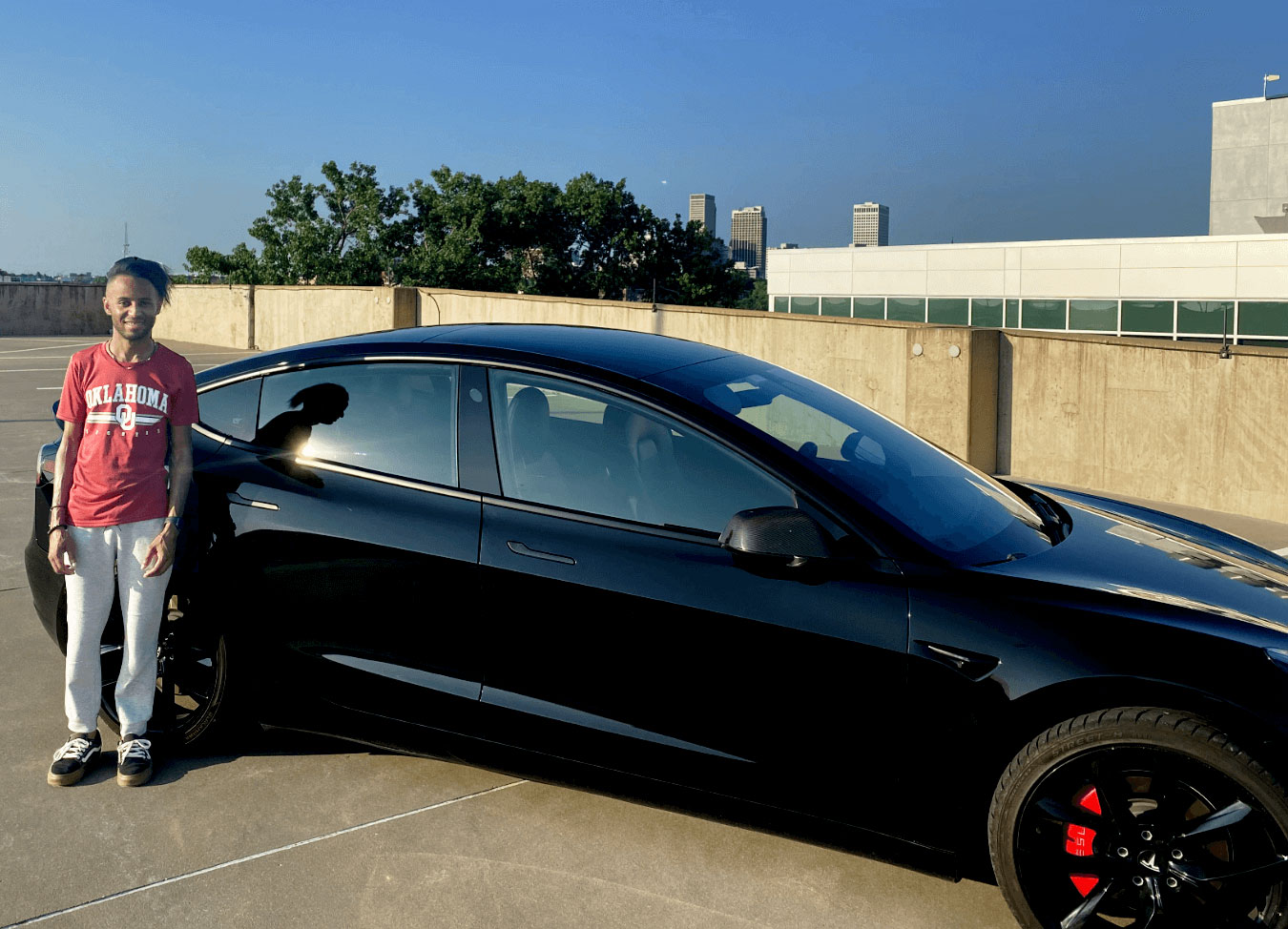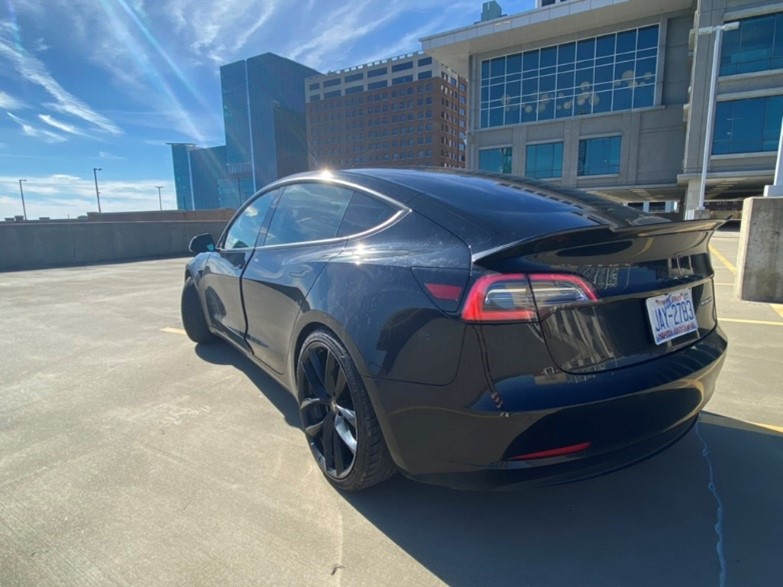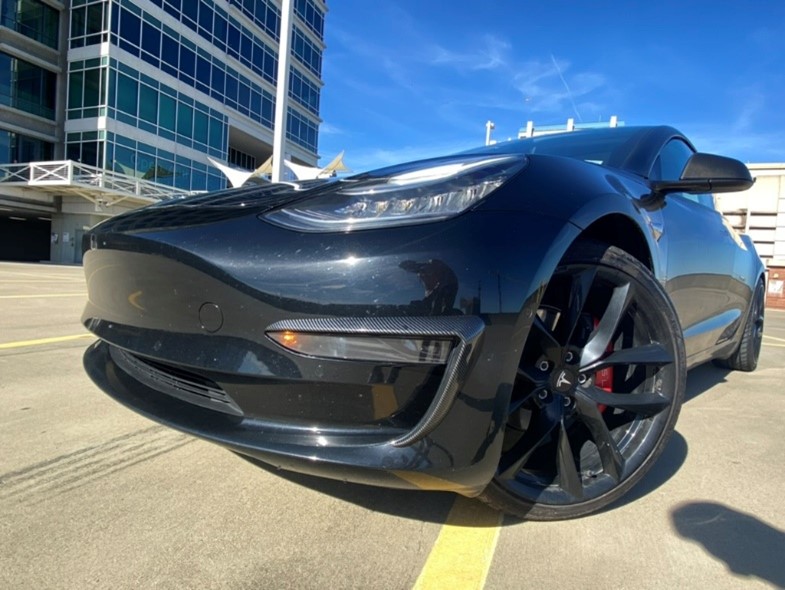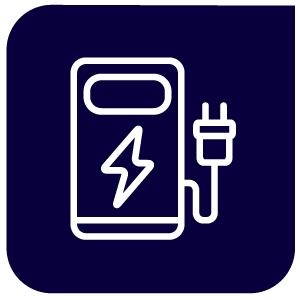
I’m an outdoorsman at heart. I enjoy traveling and camping off the grid once I reach my destination. And I’d rather spend the night in a national park than a 5-star resort. I’ve been fortunate enough to have visited 48 states and 3 countries and I’m only just getting started!
Naturally, I’ve been a truck guy. The payload capacity and terrain capabilities with a truck are much more attuned to a nomadic adventure lifestyle. Dirty boots or skis? Throw them in the bed. Catch of the day? Toss it in the cooler. Rough terrain? Drop ‘er into 4-lo. I had been the proud owner of my dream vehicle, a Toyota Tacoma pickup.
Deciding on and purchasing an EV
With that in mind, when I first considered going electric in 2022, I had my eyes on two vehicles: the Ford 150 Lightning and the Rivian R1S. Because Rivian vehicles are priced far beyond what I was comfortable spending (or affording), I went down to my local Ford dealership and test-drove the F150 Lightning.
I really enjoyed the truck itself. Being surprised at the capability and envious of its cargo space, I was ready to put in an order when the sales manager explained that she had put in her own preorder when the truck was first announced—but even she couldn’t take delivery until 2025. I simply wasn’t going to wait that long.
The lesson: If you really want the most desirable and popular brand-new models, you’ll probably need to get in line or move on to Plan B.
My search continued as I added SUVs and sedans to my list. Next up were the Hyundai Ionic 5 and the Tesla Model 3. I truly admire the Ionic 5 for all its futuristic and yet somehow simultaneous 1980s styling. Sharp lines rather than curves. Pixels everywhere. I went to my Hyundai dealer a few times and called several more times, letting their sales team know that I was interested in seeing one in person. A few days went by. Then weeks. Nothing. At all. Hyundai never got back in touch with me, so I decided to only passively look at EVs online.
That’s when I found my match: A black-on-black 2020 Tesla Model 3 fully customized by the previous owner. Someone had good taste and had added carbon fiber accents and after-market wheels complimented by big red brake calipers. So, I bit the bullet and went to look in person. I ended up driving it home that afternoon.

The importance of range (battery capacity)
My Model 3 is a Base Plus. It’s neither the high-performance nor long-range model. While it doesn’t have the least amount of range, it certainly isn’t top spec either. Anyone who purchases a new model in 2023 can expect to get up to 333 miles of range on a single battery charge. My vehicle has varied between 200 and 215 miles. I have to admit that it’s fascinating to watch the maximum range change in real time depending on the weather conditions, climate control usage, and software updates.
When I bought the car, I lived in North Carolina in the Raleigh-Durham-Chapel Hill metro area. My home was in a suburb called Apex (shoutout to the #1 best small town in America). It’s situated about halfway between Raleigh and Durham, so my typical commute was 32 miles. In the winter, that daily roundtrip usually dropped the range from 180 to approximately 70 or 80 miles.
The dread of range anxiety
While I realize range can fluctuate, losing 40 to 50 miles per charge felt completely unacceptable. I didn’t buy an EV only to end up constantly worrying about whether I had enough battery life to reach my destination.
Unfortunately, the house I lived in did not have an EV charger. I tried the 220-volt outlet with Tesla’s adapter that was intended for the dryer but could never get it to work without tripping the breaker. So, I was doomed to use the 120v standard US wall outlet. Ugh.
That meant my vehicle would usually take about 10 to 11 hours to charge overnight. Needless to say, I spent a lot of time at Tesla supercharger stations when I was running errands around town. Thankfully, there were a lot of superchargers spread around the metro area.
When I took road trips from central NC to visit family on the coast, I always had to stop to charge at least once on the way there and again right after I arrived. The trip is approximately 150 miles each way, but I suppose when you’re going 70 on the interstate with the heat blasting in the dead of winter, the “estimated” range isn’t even close to being accurate.

A change of scenery
Fast forward to today, and I’m now in beautiful Tulsa, Oklahoma. I’ve noticed that my range is far superior and more accurate with the estimates provided by the onboard screen. My own theory is that Oklahoma is a relatively flat state compared to North Carolina. I also have a 220-volt outlet in the garage that fully charges my car in about two hours.
I suppose now is a good time to mention the garage. I didn’t previously have a garage, and the car would constantly gauge the interior temperature to see whether it needed to automatically crack its windows to prevent frying the electronics (Teslas are equipped with a sensor and an optional setting to do so).
Now that I have efficient charging and covered storage, I’ve discovered that I no longer need to charge nightly. While I’m no expert, I’m sure flat topography and a change of seasons might have contributed as well. These days, I only charge about once a week even though I drive far more often than I used to.
Now I’m driving city miles, where the regenerative breaking puts energy back into the batteries more frequently. Lots of short in-town trips seem to be better for extending range than highway driving.
The lesson: Having your own charging infrastructure and a contained garage makes it a lot easier to be an EV owner.
In part 2 of my EV blog series, I share my thoughts on public charging along with some recommendations based on my experiences over the past year.
EV and Convenience

Learn more about EV and convenience with new resources in the EV Hub.


